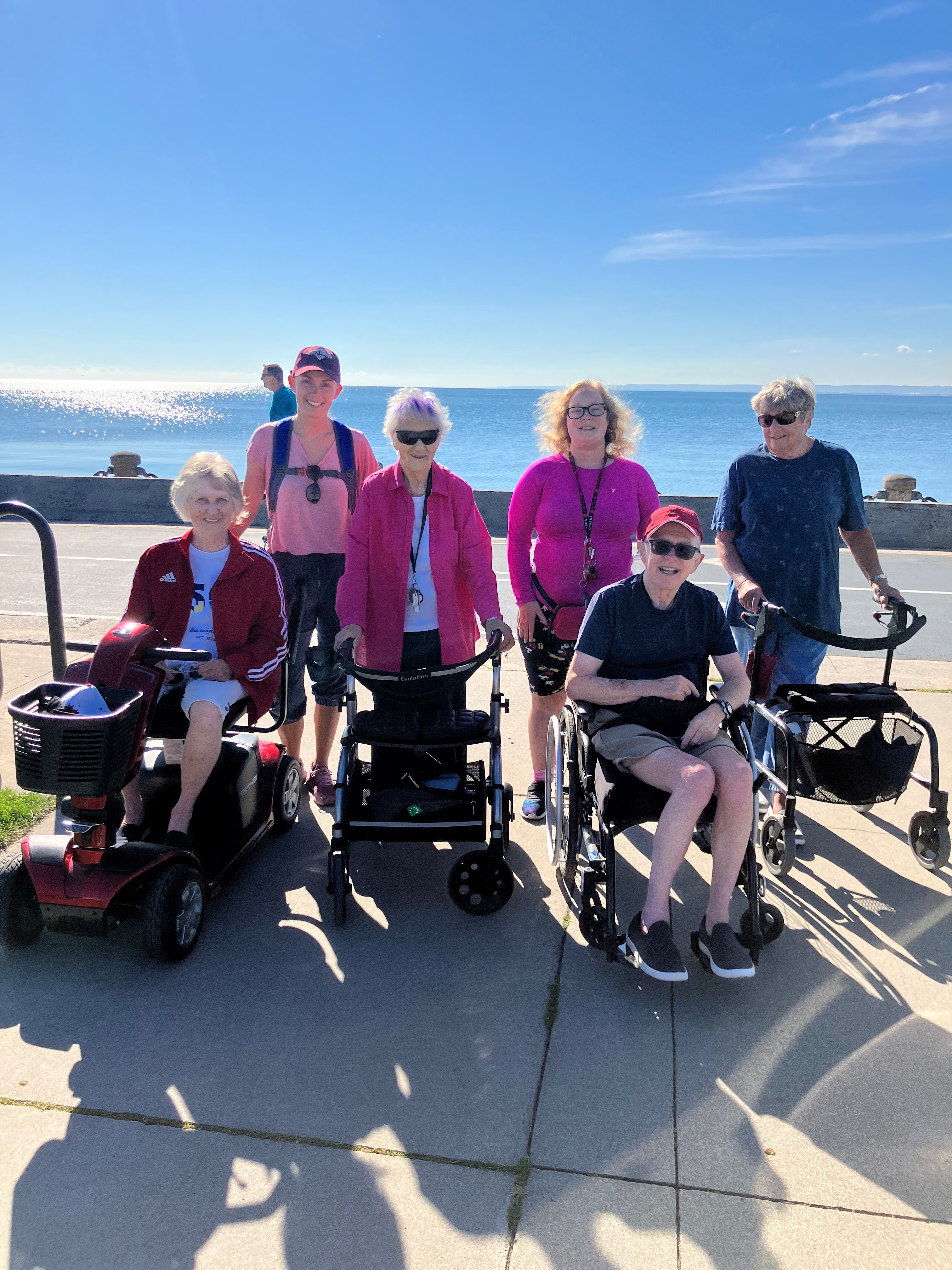Residents of Halton Community Housing Corporation at Pinedale Avenue review the Hub Calendar of Events at the launch event for the Pinedale Community Wellness Hub, March 2024.
By: Adeeta Aulakh, Project Manager, Burlington Ontario Health Team; Andrea Evershed, Director of Community Services, Thrive Group; Dr. Reham Abdelhalim, Manager, Population Health and Evaluation, Burlington Ontario Health Team
Expanding and improving access to community support services for seniors improves preventative care, reduces reliance on institutional care, and honors seniors’ wishes to age in their home. Innovative models are required to address the current challenges in providing comprehensive community care, including the health human resource shortages, historically siloed services, and complex needs, including social determinants of health, of seniors. The Community Wellness Hub Model developed in Burlington, Ontario is an innovation in senior’s integrated care that brings health, housing, and social service providers to work together as one team and enables preventative and maintenance care for vulnerable seniors in the community. By being strategically embedded within senior housing complexes, the model reduces barriers to access, recognizes the value of housing partners in addressing social determinants of health, and enables a relationship between housing and community support services that benefits seniors.
How does it work?
The goal is to empower our seniors to lead fulfilling lives within their community by proactively addressing their health and wellness needs, thereby mitigating the need for acute care interventions. Each Hub location is spearheaded by a lead organization that employs a dedicated Hub Connector. The Hub Connector takes up an office in the building to seamlessly integrate a spectrum of community services within the Hub’s ecosystem.
Successes
The best indicators of success come from the stories of Hub Members (clients of the Hub) and Providers directly; you can hear from them in the video below.
The latest Hub evaluation data speaks to this model’s potential for impact at the health systems level. Hub members have lower, less urgent emergency department visits; lower hospitalization rate for Ambulatory Care Sensitive Conditions (ACSC), which captures chronic conditions such as asthma, diabetes, and heart failure; and shorter length of stay than their comparable segment of the population. If we were to think about the Community Wellness Hub from a system perspective and assumed it was serving 100, 000 seniors in Ontario, this difference in hospitalization rate and length of stay would save the system $89,720,019 per year based on 2022/2023 calculations of ACSC hospitalization costs.

Innovations and Lessons Learned
After six years of employing a learning health system approach—characterized by implementation, testing, and refinement—the Community Wellness Hub has evolved into a standardized integrated care model. The innovations and lessons learned from this implementation have applicability to health leaders looking to implement innovation across care settings and the continuum of care.
Challenge the Status Quo: Integrated care requires challenging the existing siloed approaches to funding, planning and working together. The initial alliance of health, social and housing providers that came together to implement the Hub recognized that it was important to do things differently in order to best support seniors in our community; this meant openness to changing their existing ways of doing work to align workflows, tools and resources to improve the coordination of care for seniors.
Robust Evaluation: The Hub model has a comprehensive evaluation plan that entails data collection from day one to monitor performance and impact over time. The evaluation results have been instrumental in expanding the reach of this model, including in advocacy for funding and spreading and scaling the Hub to multiple locations.
(Above) The Wellington Terrace Hub members attend a Walking Group to maintain strength and mobility led by Physiotherapists at the Hub.
Strategic Identification and Targeting of Intervention: In implementing an innovative solution with limited resources to bear, a data informed approach is required to prioritize the highest need members of the population. The selection process for new Hub locations employs a sophisticated needs matrix, considering factors such as the density of seniors, their social determinants of health, and health care utilization patterns. Other factors such as demographics, current availability of services, and readiness of partners also informs identification of new Hubs.